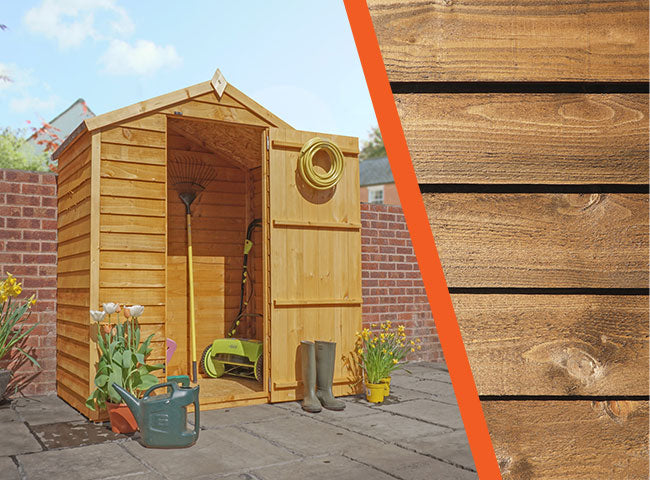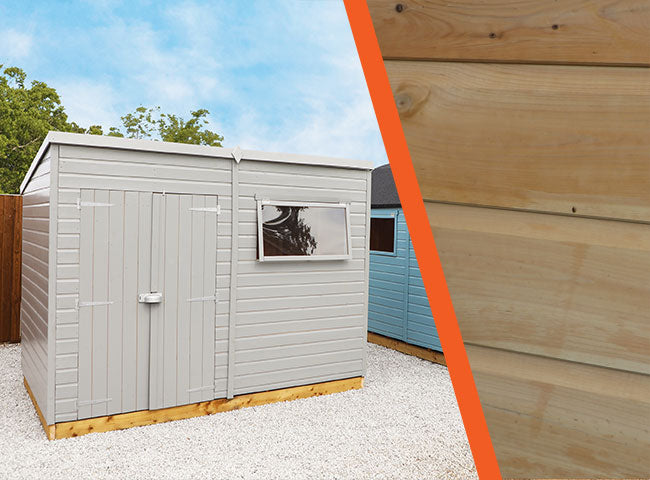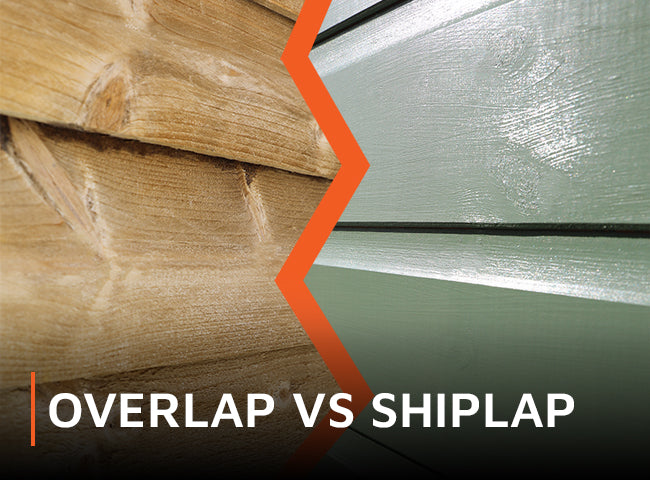Do you know your overlap from your shiplap? The world of cladding can be overwhelming, but don’t worry, we’re here to help and ensure you pick the perfect wooden shed for you.
How to choose the right cladding for your wooden shed
Overlap and Shiplap are essentially two different types of shed cladding. Cladding is simply the covering of your building. Cladding is watertight and helps ensure your belongings remain safe and dry.
The cladding you choose not only changes the look and feel of your shed, but also changes the shed’s structural properties, influencing what you can store inside. There are pros and cons to each, so we are here to take you through the different options.

What is overlap cladding?

Overlap cladding is in the name, the boards overlap one another to create a traditional and rustic look. The overlapping design allows rainwater run-off and ensures your belongings are kept dry from the rain. This watertight design will protect from the wet British weather, however overlap cladding isn’t airtight. This means your shed could be susceptible to draughts and moisture. With this in mind, it is important to consider what you are storing in your shed; considering whether you have any equipment or materials that may be susceptible to dampness. If that is the case, we’d suggest opting for a shiplap shed.
Overlap cladding is typically the easiest and quickest way of manufacturing shed cladding, this means we can offer our overlap sheds at the lowest price. So if you’re budget conscious and just looking for a simple storage solution, then an overlap shed may be a good option for you.
What is shiplap cladding?

Shiplap cladding consists of multiple boards of timber which create a flush panel. Shiplap cladding features a recess at the top of the individual boards which helps water run-off, offering protection against the elements. Not only is shiplap cladding watertight like overlap cladding, but it also has the added benefit of being airtight, meaning belongings are much less at the risk of draughts and dampness. This means shiplap sheds are an ideal choice if you intend on spending time in your shed, as a workshop for example, or are planning to store items that could not risk coming into contact with any moisture.
The downside to shiplap cladding is its more complex manufacturing process makes it a more expensive option. However, another added benefit is its aesthetically pleasing smooth exterior, coupled with smooth interior panels, creating a high standard of finish both on the inside and outside of the building. This gives a more premium feel to your garden.
Overlap cladding is a cost-effective option. Watch to learn more about this construction method and why it's ideal for secure, dry storage.



Share:
Waltons guide to planning permission for sheds
Composite VS Timber - Which one is for me?